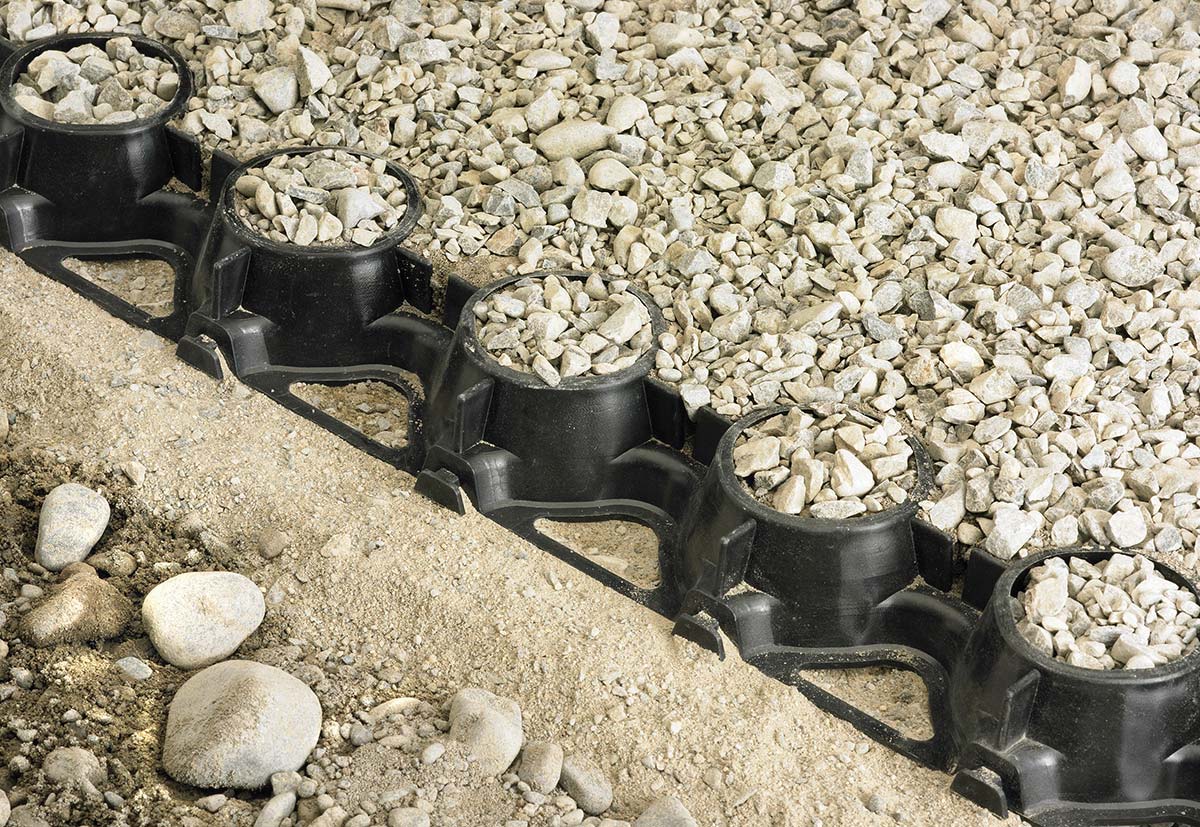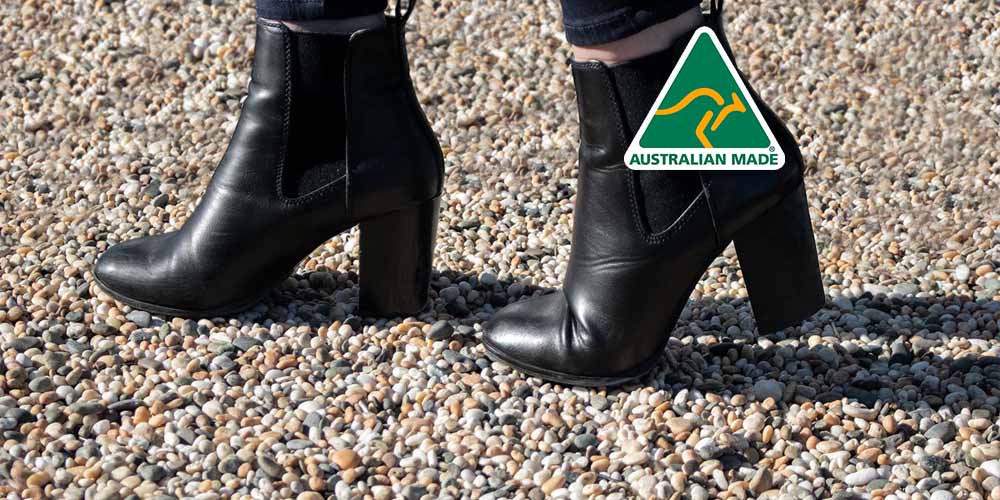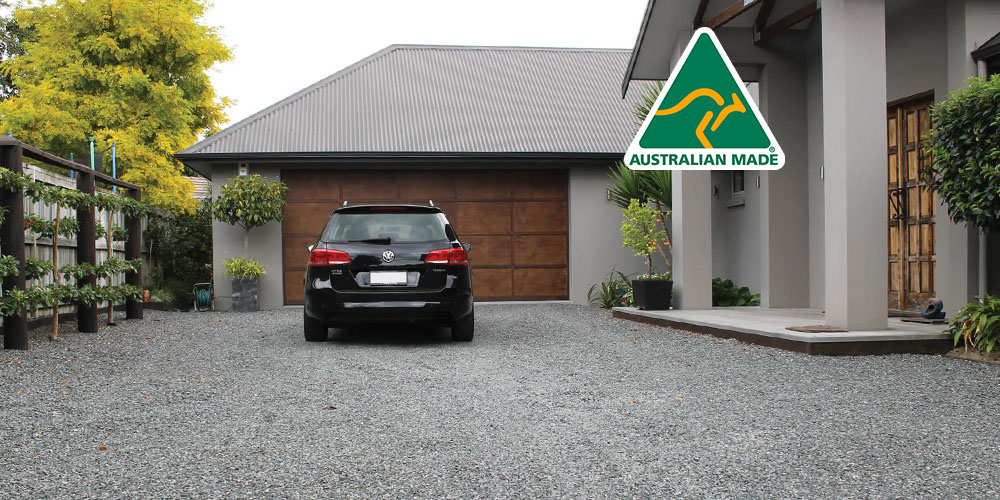When it comes to driveways, we all want to create something that not only stands out as a statement for our property, but lasts over time, no matter the amount of use it gets. Driveways are a big investment, so we need one that’s designed with form and function in mind. It needs to look great, but in order to last, there are certain design aspects that a driveway must have to successfully perform.
This is especially important on sloped driveways, where gravity becomes a factor for water runoff, wear and tear of the driveway surface due to tyre grip, the weight and pressure of vehicle traffic, and the global stability of the land underneath. Permeable gravel or pebbled driveways provide an optimal solution by slowing water flow, filtering excess rainwater and dispersing it more evenly into the surrounding environment, which protects both the ground underneath and the surface, but only if they’re designed and built correctly.
It’s a common perception with pebbled or graveled driveways that the surface material will all-too-often shift and eventually move off the driveway from heavy rain or constant vehicle use, so in this blog, we’re going to look at how to successfully create a graveled or pebbled driveway on sloped land using permeable paving panels and SureTex geotextile.
Designing a gravel driveway for sloped terrain with permeable paving
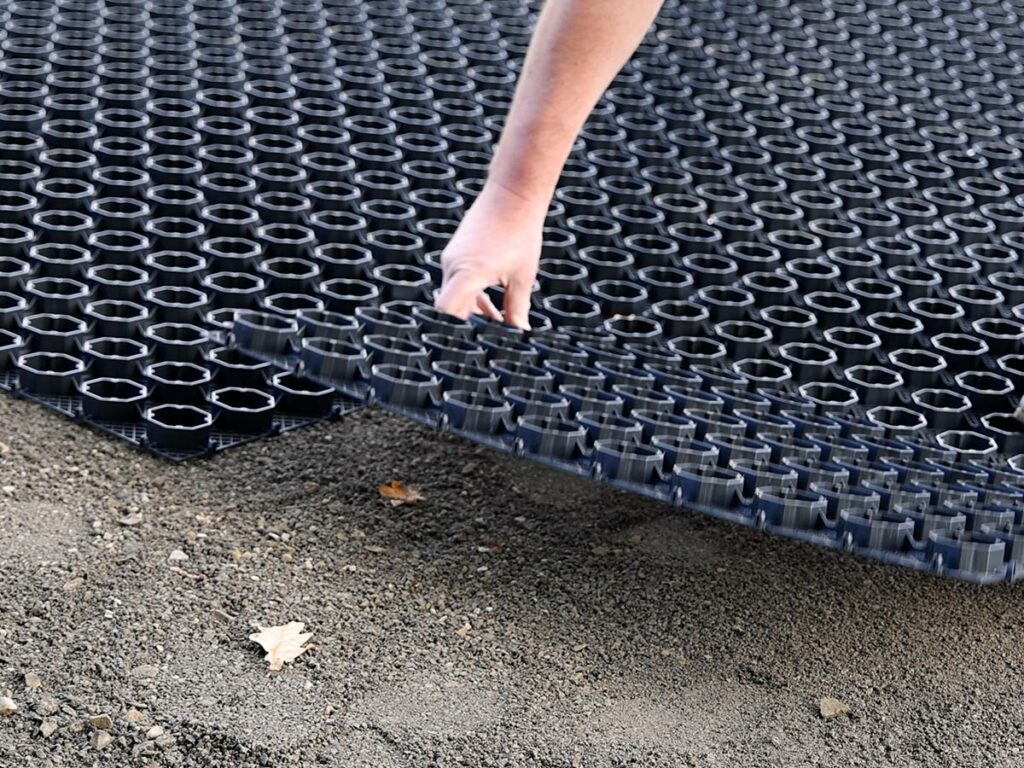
To better understand how to build a functioning and long-lasting gravel driveway, first we need to understand all the different aspects that work together and the function they perform.
On sloped land, excess water can have a devastating effect. During heavy rainfall, it scours and erodes soil, either off to each side of the driveway or forcing its own way through the middle. Excess water can also oversaturate the soil underneath your driveway. If it collapses, the surface sinks into that hole, which means you end up with potholes. Even heavy traffic can slowly push unsupported driveways into the soft soil over time, forming ruts, tyre-tracks and those ungainly raised sections down the middle of your driveway that ends up scraping the bottom of your car.
To counter this, let’s look at a few different design aspects that will prevent the above from happening.
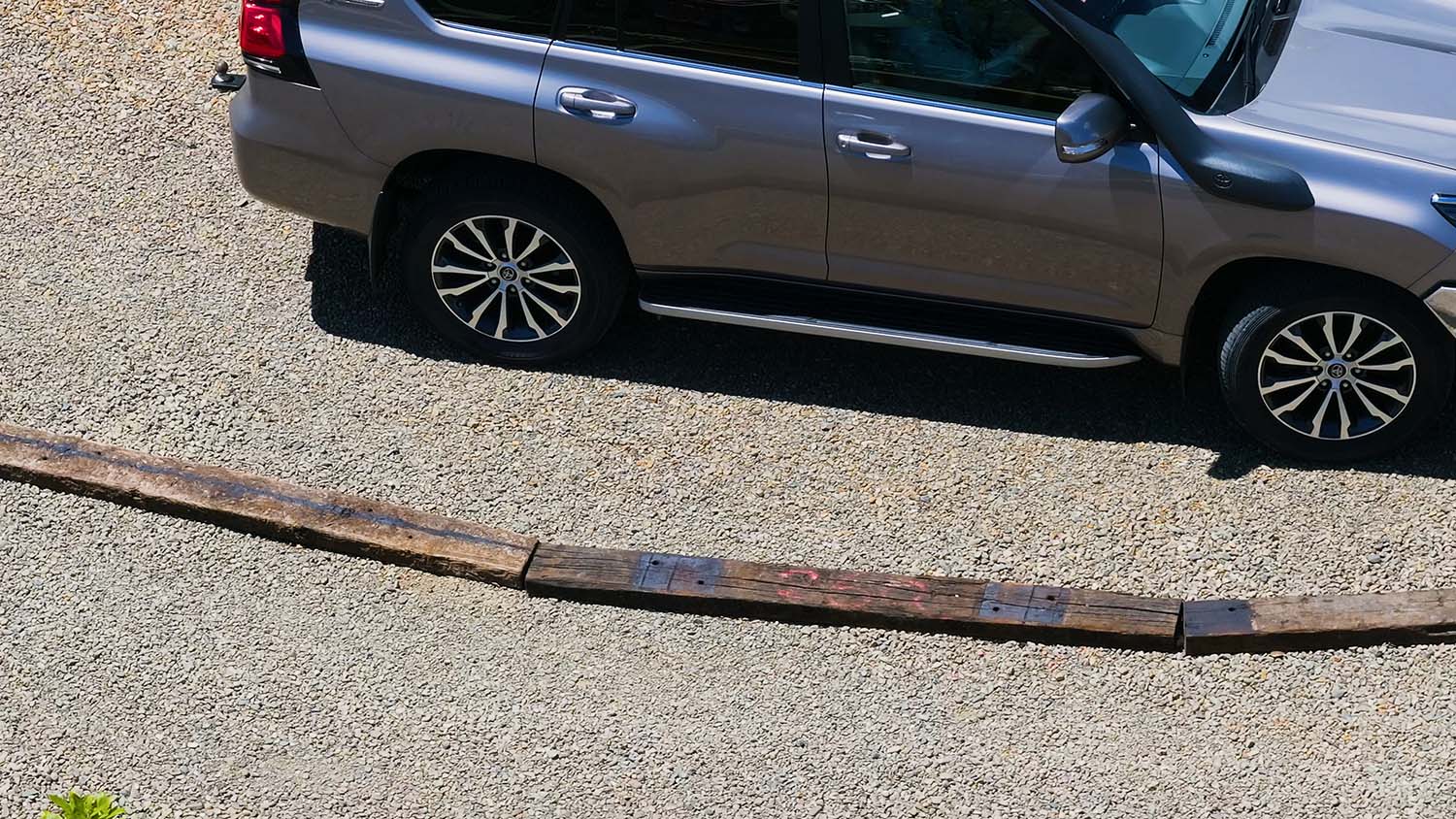
The first question we need to ask ourselves is – what do I want my driveway to do? That may sound like an obvious question, but by breaking this down into multiple, simple answers, we get a better idea of the components that make a successful driveway. Your answers could be:
- I want to divert stormwater
- I want to slow down excess water runoff on the steep slopes
- I want my driveway to be able to handle heavy traffic
- I’ve got tight corners up the slope, so I don’t want stones to move
- I need turning circles or a turning area
- I want it to remain dry during winter
- I want to be able to ride my bike over it
- I want a weed free driveway
By understanding all the elements in your driveway, we can break down what’s required to create it, so let’s look at how we can do that.
Drainage solution for a sloped driveway
Once we know the general layout of the driveway, we need to think about where excess water will go. When building on a slope, water is always going to find a way downhill, and unless we create a pathway, it will find its own way down, gouging and eroding soil along the way until it clogs up your garden or stormwater drains.
One of the benefits of permeable paving is that it stores, filters and slows down excess water, but we’ll look at that a little later on. For now, we’re just thinking about where we want excess water to go, and how to carry that water into our stormwater systems.
Naturally, you’ll need good drainage at the bottom of your driveway. That should feed into the main stormwater system, but depending on the environment surrounding the driveway up the slope, there may be ways to safely feed that water back into the garden to help nourish plants and root systems.
When creating the base level of sloped, curved driveways, gently slope the land toward the inside corner, which should always be the lower side. If the driveway is just straight, angle the base layer to the left or right and put your drainage on the lower side where it’s easily accessed for any future repairs or upgrades.
You’ll want to surround your drainage area with SureTex geotextile to prevent soil from clogging it up.
Good drainage:
- Protects waterways
- Stops scouring and erosion
- Diverts water to where it’s most needed
Preventing potholes and rutting on a sloped driveway
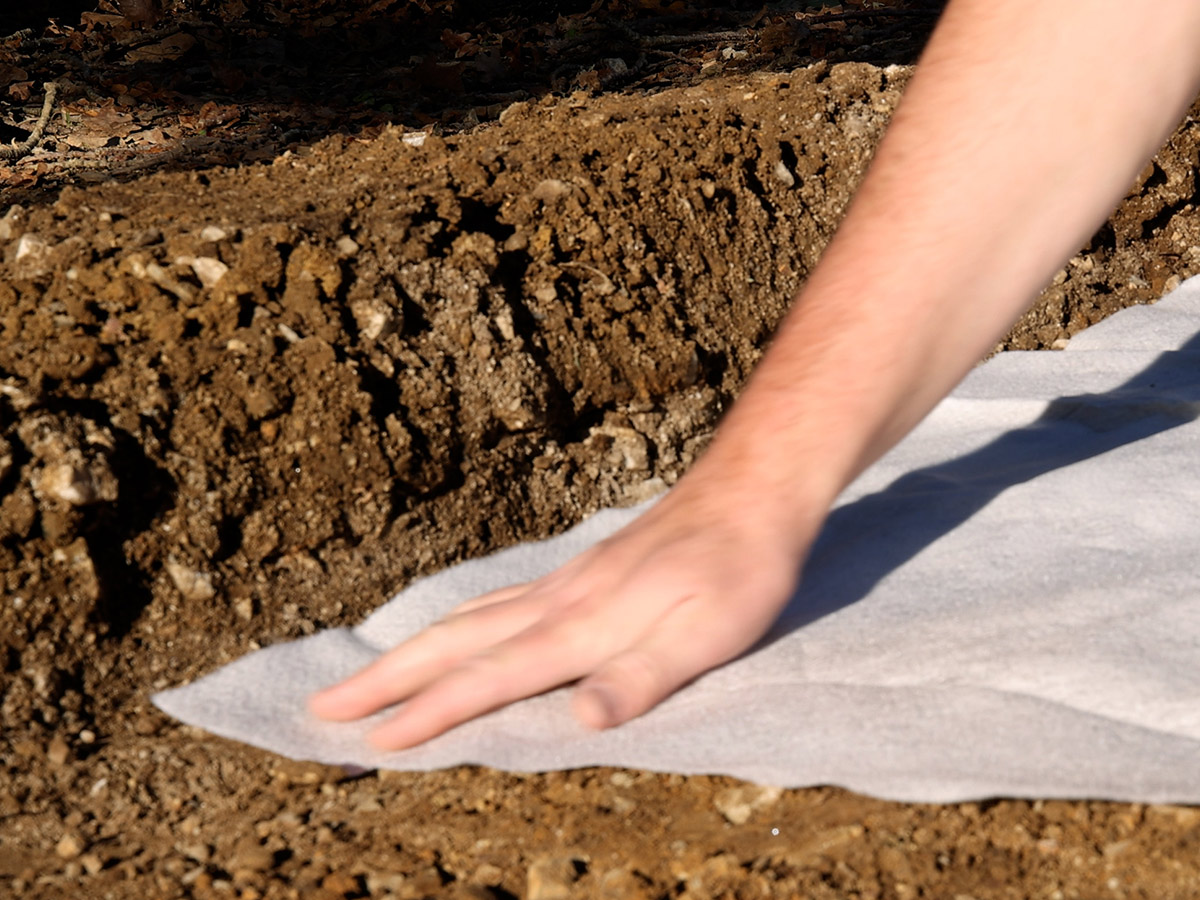
To prevent potholes and rutting on the surface of your driveway, it’s vital to place a layer of SureTex geotextile between the softer soil and compacted layer of drainage aggregate above. This hard-wearing fabric creates a protective barrier, preventing the stones from sinking into the soil. This is especially important during or after heavy rain when the subsoil gets oversaturated. Without geotextile, the heavy, sharp stones would either sink in or be pushed in by vehicles.
SureTex geotextile also acts as a water filter. Though soil particles and stones can’t pass through, water that has seeped through the drainage slowly filters into the soil below. This slow filtration means the soil is less likely to get oversaturated and is far less likely to erode or collapse. If it does, SureTex will help support the aggregate layer above to minimize sinking.
Another added benefit is the prevention of weed growth. While not regarded as a weed mat, SureTex will stop weeds from forming.
SureTex Geotextile:
- Separates aggregate from the subsoil layer
- Prevents migration between the two layers, which stops rutting and potholes from forming
- Acts as a weed mat
Permeable paving options for a gravel driveway
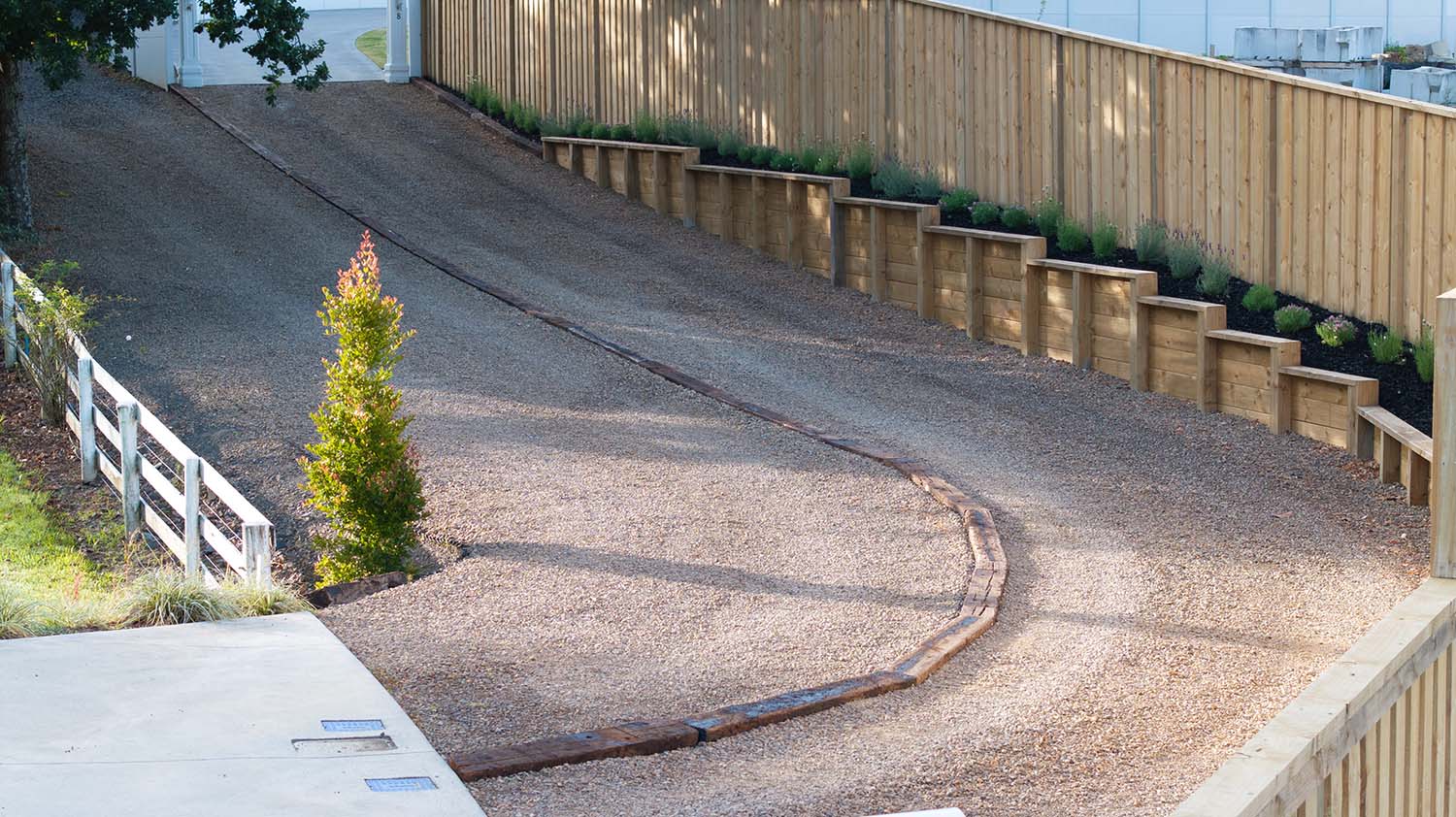
Perhaps the most important aspect of creating a gravel driveway on sloped land is the use of permeable paving. With options to choose from, permeable pavers are what lock the pebbles and gravel in place. You can use them on slopes up to 11o. PebbleLock is ideal for 8-14mm decorative stone and pebbles with light use traffic, or if you’re using larger vehicles, use SurePave. With permeable paving, water won’t wash the stones away, vehicles won’t push stones aside, and because they’re tough, they will remain flat. For any surface stones that do shift, it’s just a matter of brushing them back into place.
Placed over the aggregate layers, permeable pavers are designed to catch excess water and slowly filter it away. Unlike asphalt or concrete where water pours off the hard, non-porous surfaces straight into your drains or eroding your gardens, with permeable paving, water gets trapped within the stones than captured within the pavers and drainage aggregate below. The pavers slow the waterflow, allowing it to filter through the aggregate layers to where SureTex will transfer it where you need it most. This is especially important in areas where you want to retain as much of that rain when it comes so you can gently feed it back into your garden.
Because water flows through the pavers, the surface area always remains dry. That means no puddling or pooling after it rains, so you can use your driveway exactly how you want to in all weather conditions.
Permeable Pavers:
- Hold gravel/stones in place
- Can be used on slopes up to 11o
- Store and filter water during heavy rainfall
- Slow waterflow during heavy rainfall
- Keep the upper surface level flat and dry
- Are an environmentally responsible driveway choice
Materials to use on a sloped gravel driveway
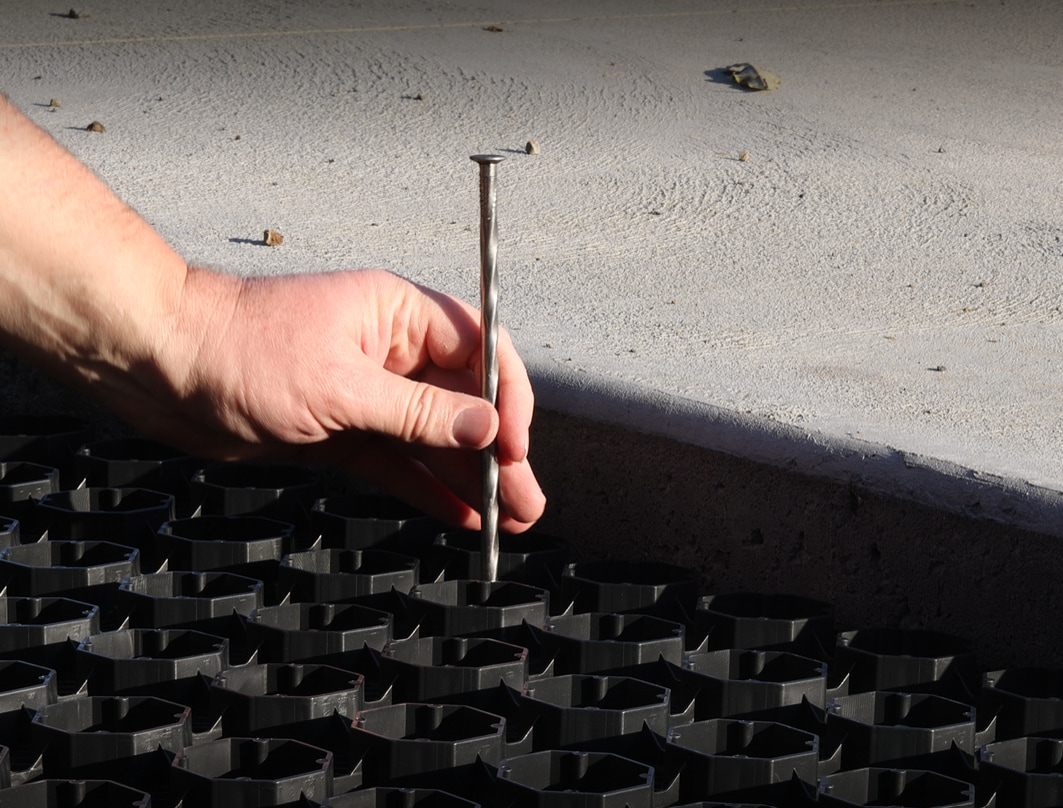
Strol has a great range of products designed especially for each aspect of construction. To make it easy to follow, here’s a quick list of everything you may need.
- SureTex – a geotextile fabric designed for soil separation, filtration and support. This is a must use item, placed between the subsoil and the aggregate layers. It is used in conjunction with the pavers to prevent potholes and rutting on the surface.
- Drainage Aggregate – commonly GAP20 or GAP 40, placed on top of the SureTex geotextile and compact.
- Crusher Dust – sometimes known as GAP7. This is a fine layer of drainage aggregate that helps lock the pavers in place and lets them settle into the drainage aggregate. This doesn’t need compacting, it’s there for the pavers to settle into.
- Permeable paving – with the options of PebbleLock or SurePave, these pavers lock the stones in place while allowing water to filter through. We also have another great option, SmartPave, which has the geotextile backing attached.
- WeedMat Pins – 130mm or 230mm, flat-head, galvanised steel pins for securing both the SureTex and Permeable pavers into the ground.
- Gravel/Stones – depending on your usage, you can either use 8-14mm pebbles with PebbleLock and SmartPave, or up to 20mm aggregate with SurePave.
Check out our Retailers page to find where these innovative products can be purchased. For the aggregates, call around your local landscape suppliers or hardware store for the best options.
Constructing and maintaining your driveway
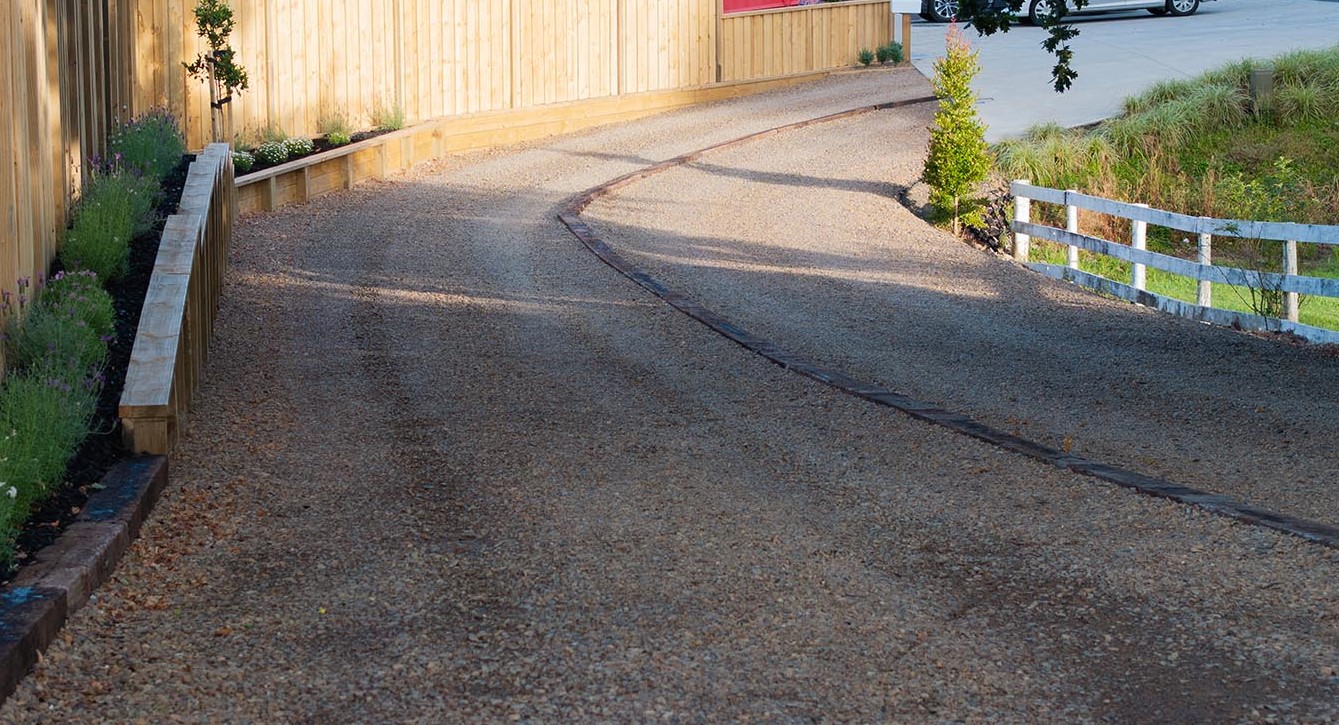
Whether it’s on a slope or a flat area, this easy-to-follow guide to building a permeable driveway will quickly get you underway. Before you begin, however, you’ll want to sort out exactly where your drainage will go. If you are wanting quick steps to follow, please view our installation guide.
Tips for construction and maintenance.
- Make sure you extend SureTex geotextile beyond the edge of your driveway then cut back to shape in order to prevent weeds from growing in at the edges.
- Use a hard-brushed broom for spreading the stones and crusher dust into place.
- Leaves and loose stones can easily be brushed off or back into place.
Whether it’s for light traffic or heavy vehicle use, having a gravel driveway on sloped land is now just as easy to build as though it were on flat land. It’s practical, more environmentally responsible and with the functionality of permeable paving, your driveway now actively supports the surrounding environment.

